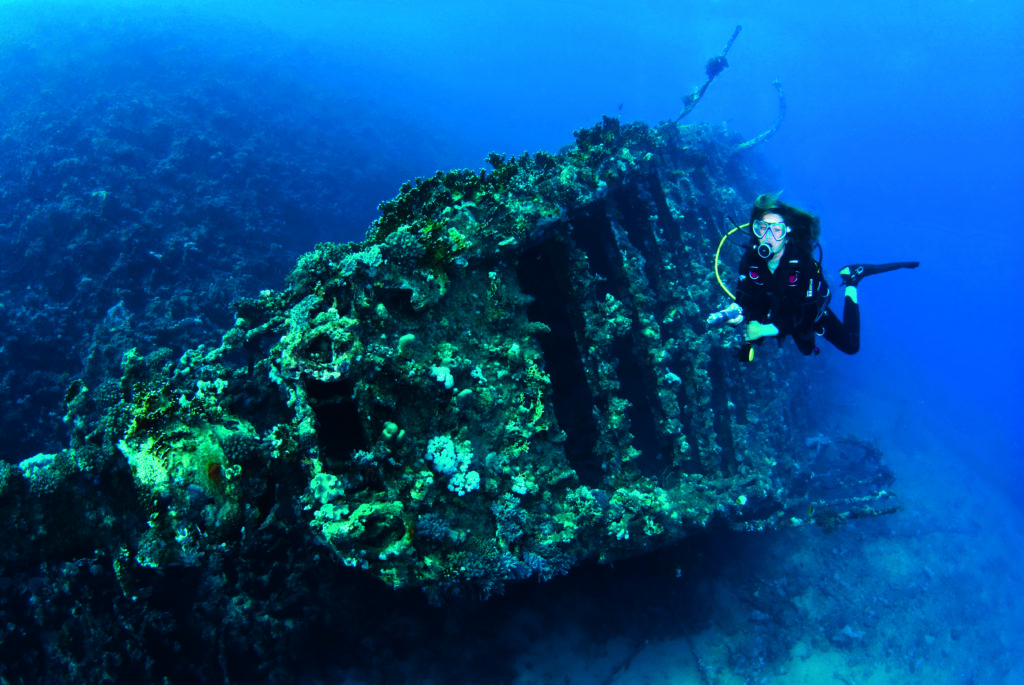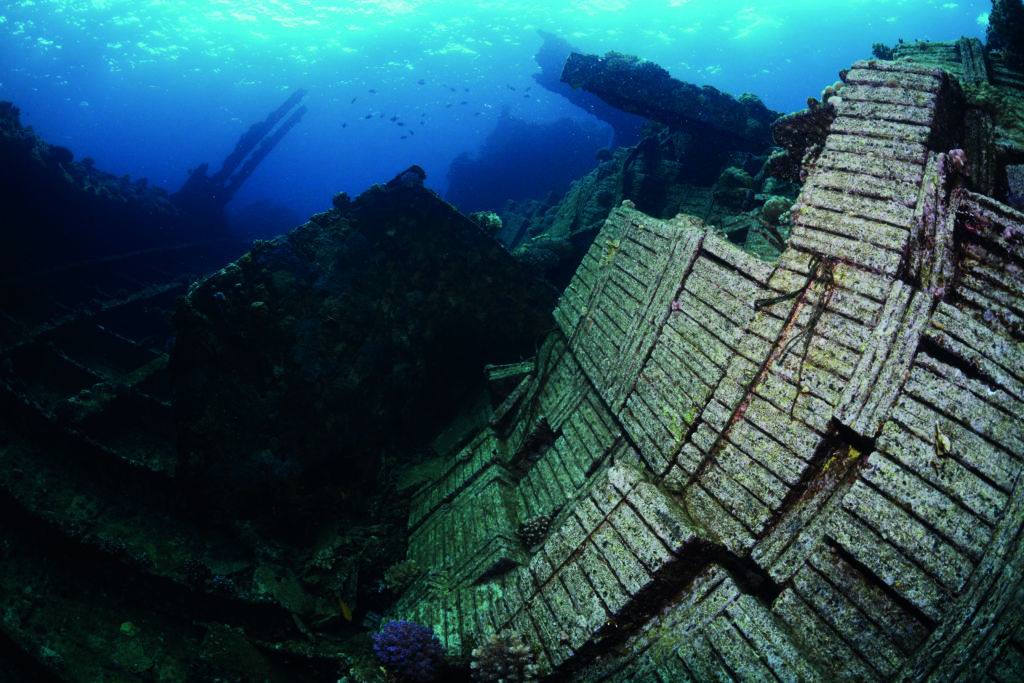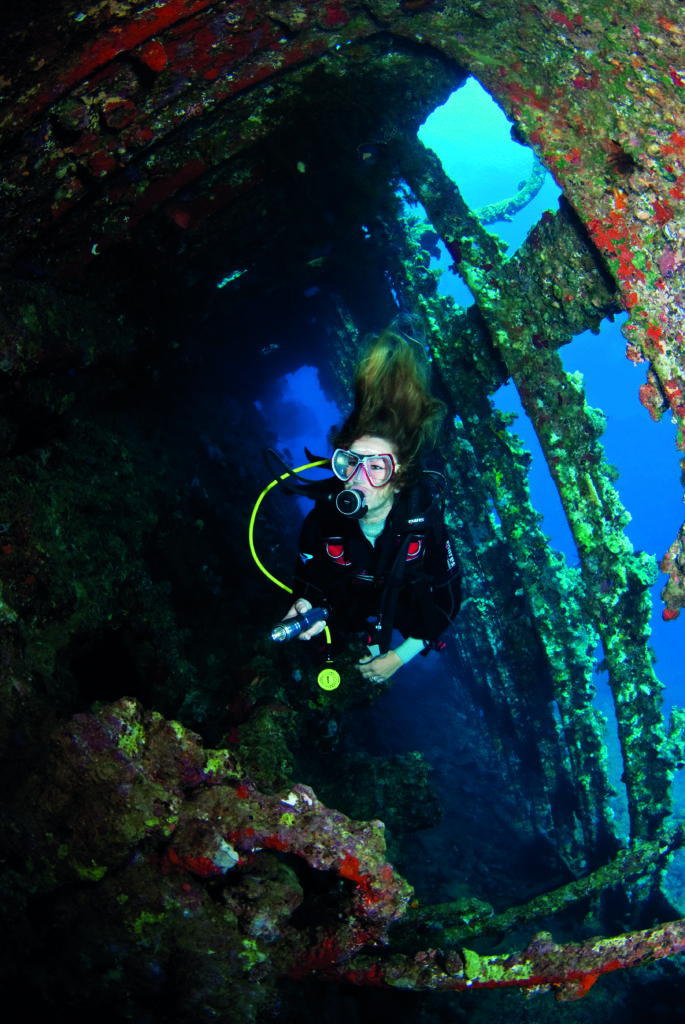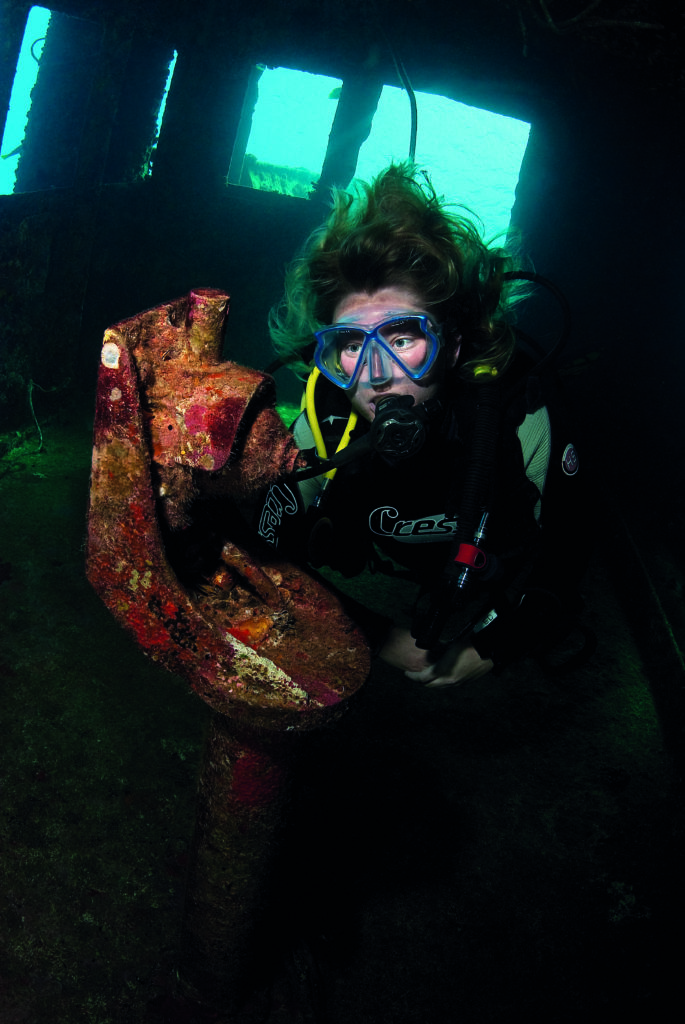The reef of Sha’ab Abu Nuhas has claimed countless ships over the years, but the remaining four are a magnet for avid wreck-divers. Photography by Mark Evans and Stuart Philpott
The northern Egyptian Red Sea is a hotspot for fascinating shipwrecks, being home to the likes of the legendary Thistlegorm, the Dunraven, the Million Hope and the Rosalie Moller, but there is one location which is a magnet for serious wreck-divers – Sha’ab Abu Nuhas.
Sha’ab Abu Nuhas is an unassuming reef that would probably not even merit a mention on any diver’s hit-list if it wasn’t for the fact that it lies close to the major shipping lane to the Suez Canal, and thus it has claimed more than its fair share of “victims” over the years.
Surrounded by relatively shallow waters and reasonably protected from adverse weather conditions, it is a regular on most northern liveaboard itineraries, and can also be reached by day-boats.
The shipwrecks that have fallen prey to its coral reef are all in decent shape, especially the “newer” vessels, and so this, combined with the depths and sheltered location, means that they are perfect for all levels of diver, and the ideal “classroom” for wreck-diving courses in a real-world environment to attain wreck-diving certification.
The Shipwrecks to Explore
The Giannis D
Of all the wrecks on Abu Nuhas, the Japanese-built, Greek-owned freighter Giannis D is by far the most popular, and for good reason – it is undoubtedly one of the best wreck-dives in the entire Red Sea.
The ship was carrying a cargo of lumber and hit the reef in 1983 going at full speed – a fact made obvious when you see the twisted prop, which mangled itself as it ground into the coral – and now it is split into three distinct sections.
The midships is smashed beyond all recognition, with lengths of wood, steel plates and metal panels strewn over the seabed. There is plentiful coral growth, and a plethora of marine life, but this is the least interesting area of the wreck-site, and is generally just passed over by wreck-divers transitioning between the more-intact bow and stern sections.
The bow lies on its port side, and is still in one piece, so makes for an interesting spot to explore. There are limited penetration possibilities, but the bow itself is an impressive size and the bow mast is always surrounded by reef fish.
However, it is the stern section that really makes this wreck special. The stern is fully intact from just before the rear superstructure, which means that if you are appropriately trained, you can penetrate deep into the engine-room, crew’s quarters and bridge.
The deepest part of the stern lies in just 24m, and it is possible to enter the ship here, and then work your way through her engine-room and then up several floors to eventually exit through the bridge.
A torch is useful so that you can pick out the details, but there is so much ambient light from the open doors, windows and hatch-covers that it isn’t strictly necessary. For photographers, the stern is a great photo prop, as is the twisted propeller, which will dwarf a well-placed model.
The Carnatic
While the other three wrecks all went down in the 1970s or ’80s, the Carnatic is far, far older. She was a sleek 90m steam-and-sail-powered passenger and mail ship and hit the reef in 1869. She didn’t sink immediately, instead sitting hard aground for a couple of days.
The captain mistakenly assumed that the ship was sound and that the pumps were handling any incoming water, but the constant seesaw motion on the sharp coral took its toll and the vessel split in half and sank, taking some five passengers and 26 crew down with her.
The survivors managed to make their way on to Abu Nuhas itself, and then in lifeboats to nearby Shadwan Island, where they were picked up a short while later by the passing ss Sumatra.
The Carnatic now lies on its port side in 26m, rising to 12m at the bow, and you can dive in with the right wreck–diving certification. Coral growth is profuse because the wreck has been down almost 150 years, and it is almost part of the reef now.
Much of the wooden decking has fallen away, revealing the holds and the four-cylinder steam engine and boilers, and penetration is simple because of all the entry/exit points through the iron framework.
Inside, you can find the broken remnants of hundreds of wine bottles, and there are often swarming shoals of glassfish that will “swallow” a diver who carefully swims through them.
The Chrisoula K/Marcus
The third-most-visited wreck on Sha’ab Abu Nuhas is the Marcus, but the reason it is so well-known in wreck-diving circles is probably more the result of the continued saga of whether it really is the Marcus, or the Chrisoula K. There are arguments for both identities, and while it is now considered a pretty safe bet that this is the Marcus, there are still those veteran divers who remain convinced it is the Chrisoula K.
Regardless of its true name, what is known without a doubt is that this was another Greek-owned freighter, and that it ran aground and sank in 1981.
She was carrying a vast cargo of Italian floor tiles, which gives the wreck its nickname Tile Wreck, and it is possible to see stacks and stacks of these in the hold.
The vessel is pretty much intact, with the midships upright and sitting in 26m-28m, and the stern section twisted over towards starboard. The holds are quite open, with lots of ambient light and entry/exit points through the deck.
Full penetration is possible in certain areas for experienced wreck-divers, though be warned – the engine-room is a tight squeeze to get into compared with the cavernous void of the Giannis D, and I’d advise a primary torch, a back-up and a third spare, because it is extremely dark once you’re inside. You will learn any necessary techniques from a wreck-diving course.
The Kimon M
The fourth wreck on Abu Nuhas is probably the most infrequently visited, which is a shame, because it is still a great dive, even if not in quite the same league as its neighbours.
This German-built freighter was carrying 4,500 tons of lentils – hence its nickname, the Lentil Wreck– when she drove hard onto the reef at full speed in 1978, destroying the bow section.
She stayed on the reef-top, before the weather conditions eventually took their toll and she slid off the reef into 30-32m of water, coming to rest on the starboard side.
Due to later salvage efforts, which saw a hole cut in the port side and the engine and other machinery removed, it is relatively easy to get into the engineering department, and from there into the holds. There is decent ambient light, but a torch is a good idea for some of the more enclosed sections. Marine life is not as plentiful as on the other wrecks, but the Kimon M is still worth a page in your logbook.
Conclusion
The shipwrecks of Sha’ab Abu Nuhas hold a siren call for divers, with many having numerous logbook entries for all four of the sunken vessels. Being located where they can be reached by both dayboats and liveaboards, they are visited by hundreds of divers every year, and if you have yet to dive Egypt’s wreck graveyard, I’d suggest adding it to your diving bucket list.
Unbelievably Divers:- Unbelievably, divers had been diving the freighters either side of the Carnatic for many years before accidentally discovering the much-older vessel on a drift dive
Also on Divernet: Dawning Of Red Sea Dive Tourism, Red Sea Through A New Lens, The Red Sea Explorer, Best Red Sea Dive Sites






